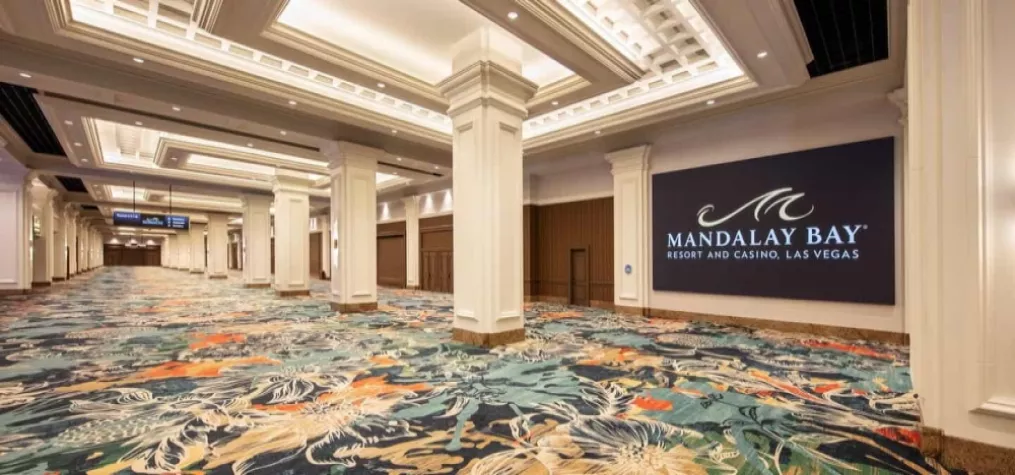Jesse Johnson

Jesse Johnson is a Marketing Specialist and Blogger at Meeting Tomorrow, a full-service event technology partner to businesses and meeting planners around the country.

Virtual reality is a really hot topic right now in the events and social marketing industries. Though it certainly isn’t the first time VR burst onto the scene (remember the 1990s?), it seems the technology has finally caught up enough with programmers’ imaginations for there to be a real buzz and genuine consumer interest.
Like any event technology though, it’s important that virtual and augmented reality (AR) are aligned with event goals and are not simply a shiny distraction. If utilized properly, virtual experiences should seamlessly integrate into the event and help promote unique brand connections for attendees.
Here are five questions to ask when considering AR and VR at events:
1. What is the goal of using VR at your event?
If one thing is certain, using virtual reality as an add-on or afterthought isn’t a great idea. The most successful examples of VR at events are those events that have been able to seamlessly integrate it into the brand experience as a major part of the show. The goal of your virtual experience should be thought out in advance and ideally, would accomplish something your other tech wasn’t already doing.
That’s not to say that all VR has to be part of a huge marketing campaign run by a large company. Rather, it should be well thought-out and feel like an important part of the experience. For example, visitors at a whiskey tasting event could be given a virtual tour of the distillery from where their drink originated. By sampling a particular blend and viewing the landscape it came from, they’d get a truly unique tasting experience.
2. Does VR make sense in the space you have?
One of the most immediate applications for VR is virtual product demonstrations, especially for large items that won’t travel well or fit into tight event spaces. This can be a lifesaver for someone trying to bring a huge, heavy item into a show or space where it might not otherwise work.
On the other hand, you should also carefully consider the amount of space you’ll need to execute your VR component. Will users need to be walking around the booth or can they stand in place? Give yourself enough room to provide the best virtual experience for your guests, otherwise, they’ll leave underwhelmed and you’ll look unprepared.
3. Will your audience want to use it?
An important question to ask your team early on is whether your attendees will be willing to put on a headset and enter your virtual world. If you have an intriguing reason to use VR and you know your audience is adventurous, they should be genuinely excited about it. If VR seems totally out of left field for your customers, they may be hesitant to interact with you at all.
When gamification is a goal for your VR solution, offering prizes is a great incentive for guests to interact with your content and share with other attendees. Similarly, creating a virtual scavenger hunt is a fun option to promote interaction and generate some buzz for your booth.
4. Could another piece of event technology do it better?
Though VR and AR are new and exciting, keep in mind that other technology might provide a simpler, better solution. If you’re looking to give users a virtual tour of an environment or product, touch screens loaded with 3D content could possibly be all you need to get the idea across. There are also holograms, 360-degree cameras, video walls and touch screen games that could be just as great for attendee engagement.
If size and scope are vital to the user experience, VR might be the best way to go. In the same way, if you’re looking to completely immerse people in another environment, virtual reality will have a far greater effect than showing a 3D model on a screen.
5. How does VR tie in to your promotion and branding?
At your event, how will people know what you’re doing? Will you run a social campaign with a tweet wall to show how people are interacting with your booth? Do you have branding in mind to draw people in and advertise your cool VR? Having a great virtual reality component won’t mean anything unless people are coming in and engaging with it.
One option is to have the VR feed streaming on a video wall so other attendees walking by can see what you’re doing. When not in use, you could switch to a looped video preview and feature social media posts of guests who’ve visited your booth.
All in all, VR is an exciting technology with huge potential in the events industry. We’re only now starting to scratch the surface of virtual applications for event marketing, and as the tech improves, so will user experiences. The last few years brought about some great advancements and I’m sure we’ll see some amazing examples at events in 2017.

Add new comment